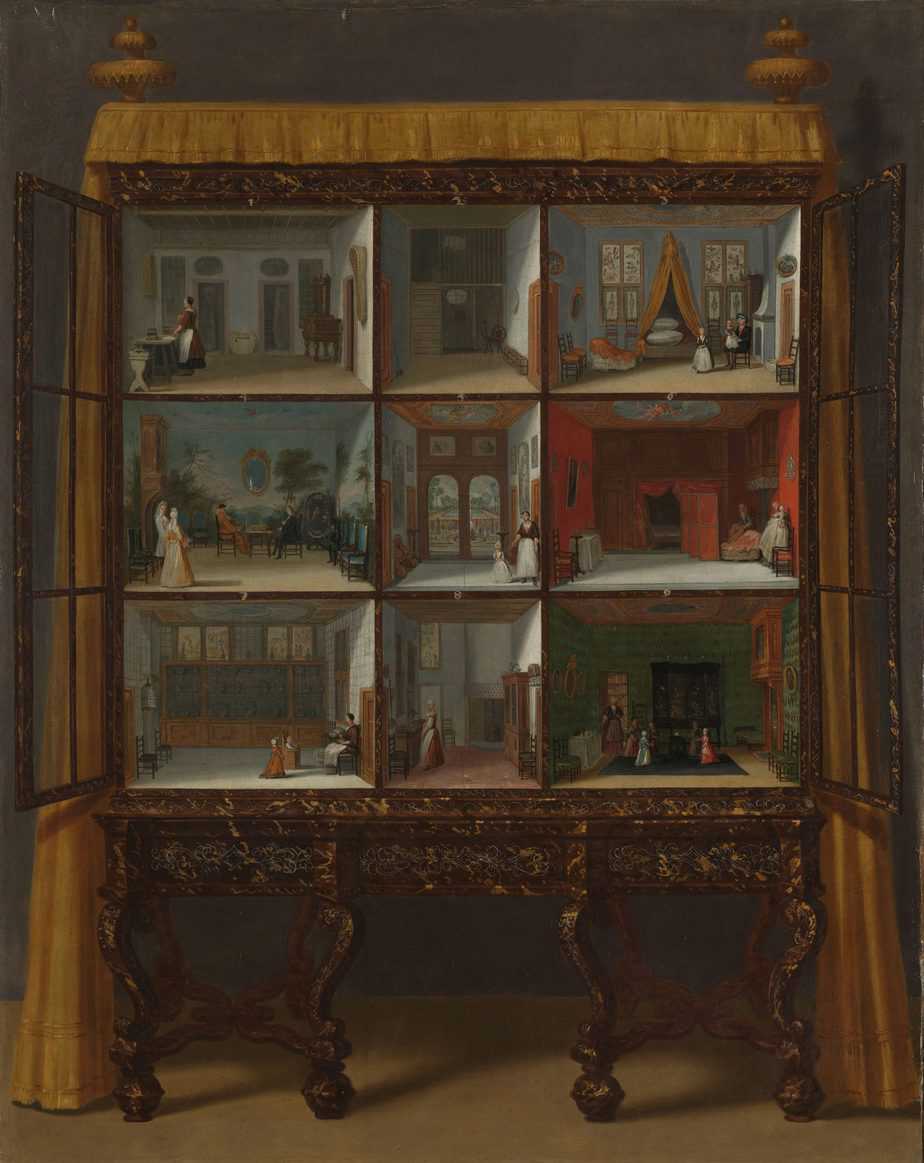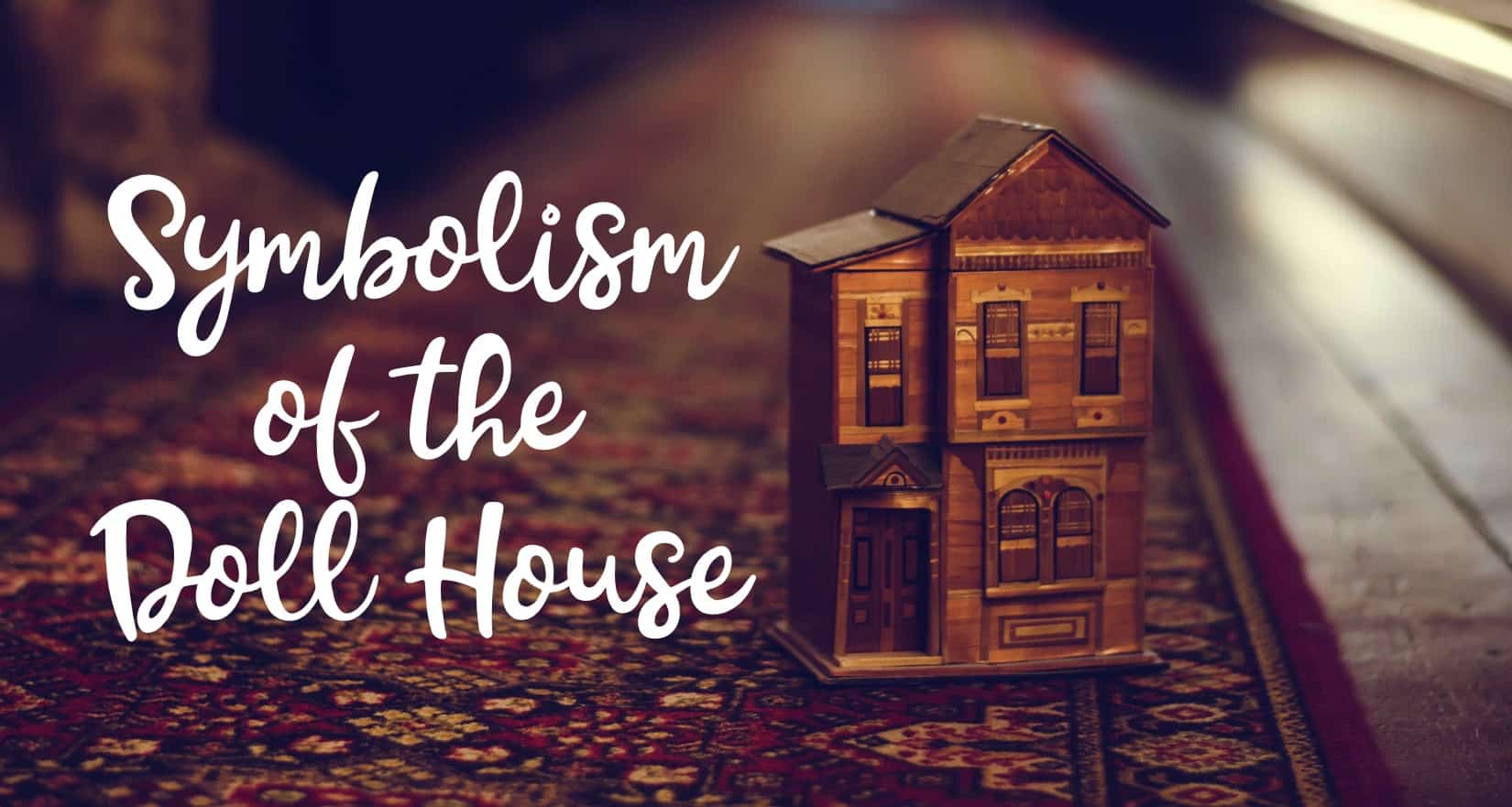Dollhouses in stories fall into a number of main categories:
- Miniature representations of big, aristocratic houses full of furniture but devoid of real love
- A mismatch between domesticity as we wish to set it up versus how it actually plays out
- Fakery
- Girlhood and naivety
- The doll house can also create a mise en abyme effect, or provide other ways for storytellers to play around with scale.

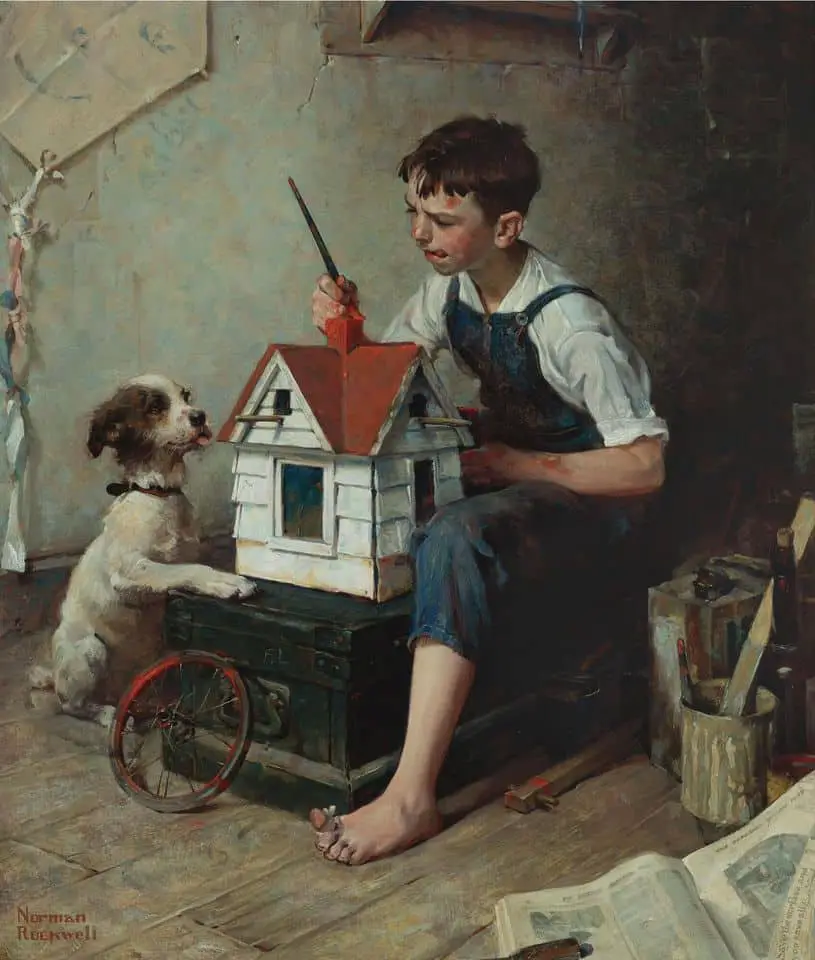
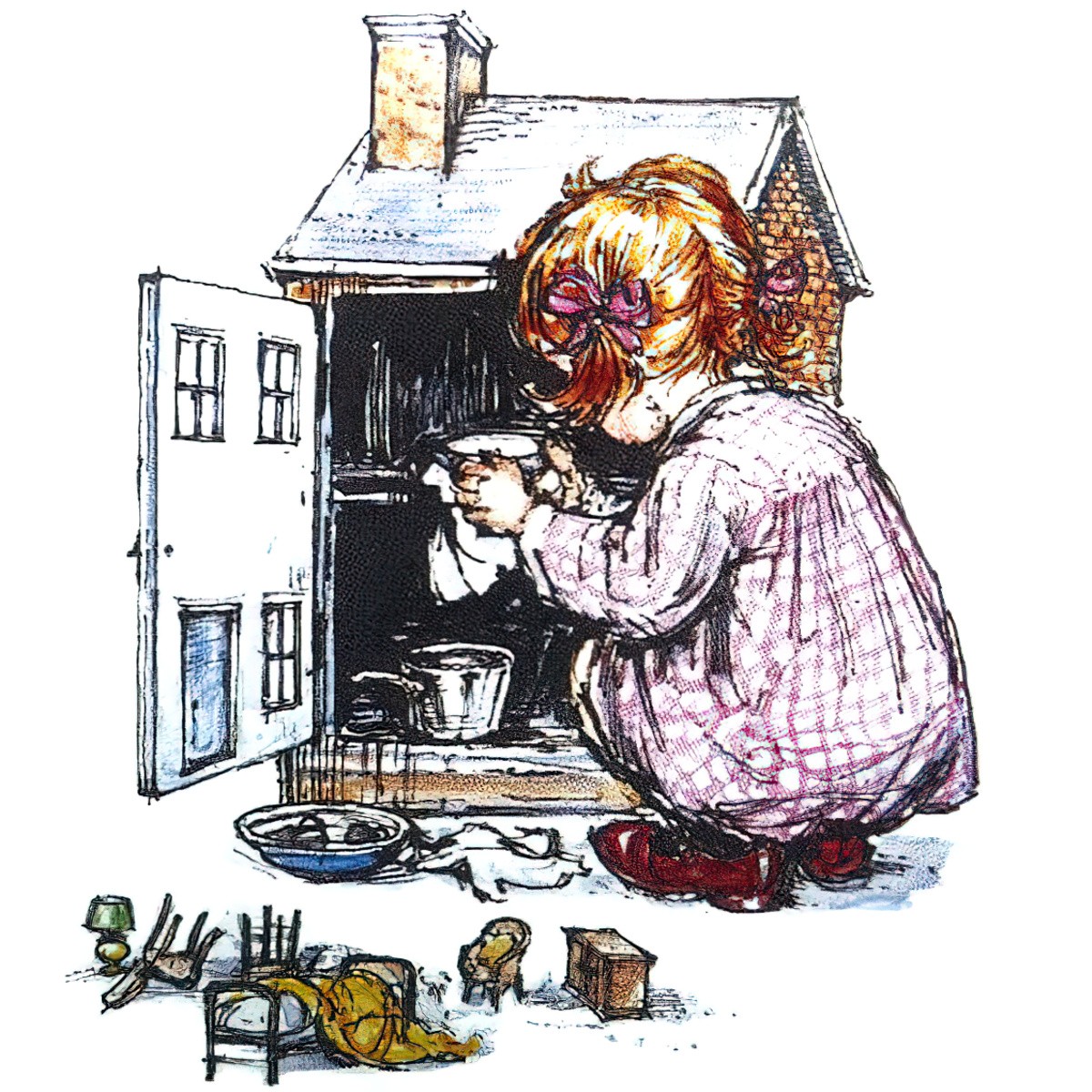
Through the window, the benches are snowcapped, stippled with pigeon prints. Winter came early to New York. The apartments across the way glow shades of yellow. Figures move from room to room. They look like doll-people. I want to collect their love seats and kitchen sets, the paintings nailed to the floral walls. I want to keep them safe in the palm of my hand.
Mother In The Dark, a 2022 novel by Kayla Maiuri
CASE STUDIES
The Tale of Two Bad Mice by Beatrix Potter
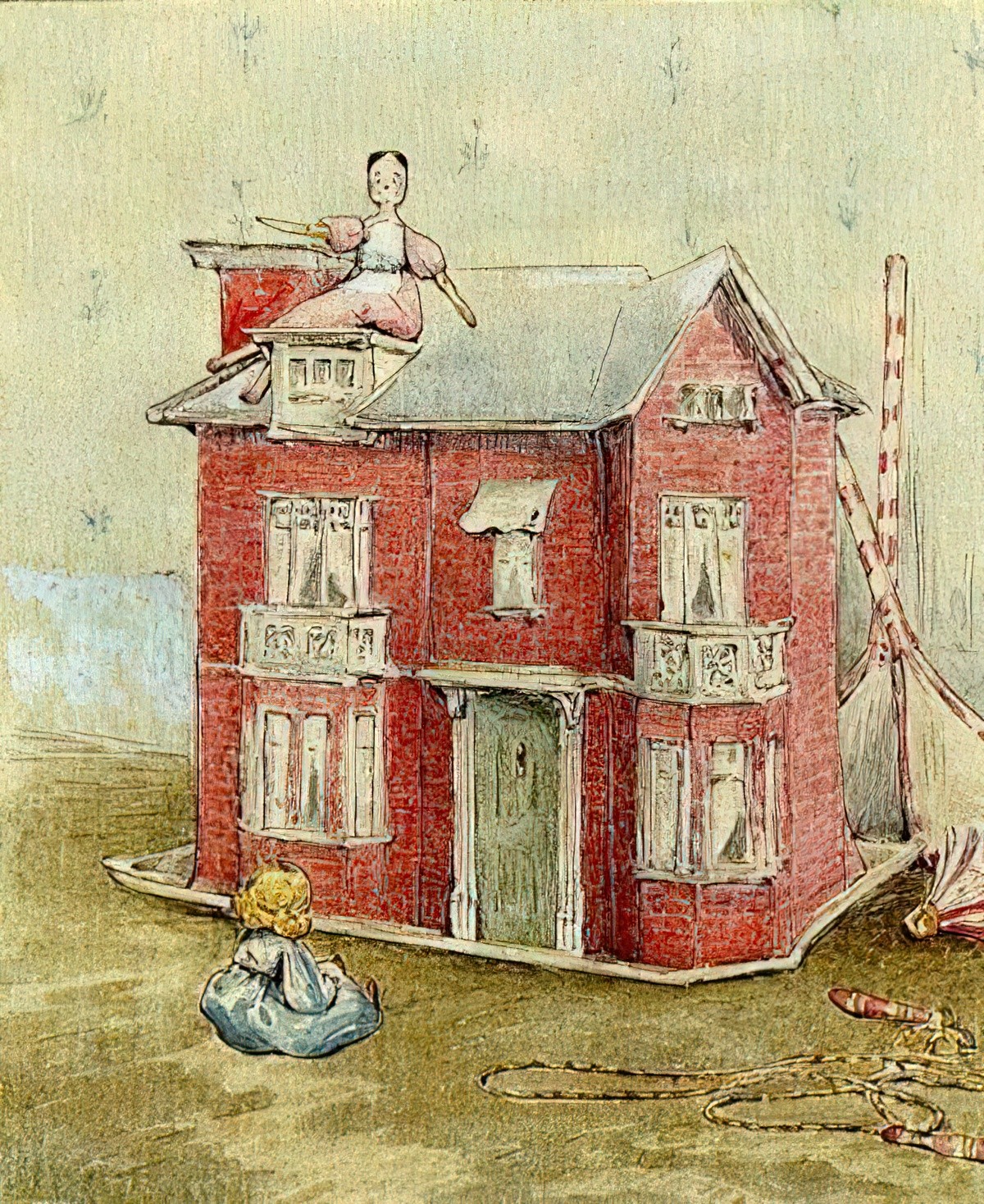
If humans could inhabit their own doll’s houses they would be small enough to observe, and even join — what? Few have handled this theme with any kind of realism. The Borrowers and the Lilliputians are not part of the human race; their traditions and customs are their own. S.H. Skaife’s The Strange Old Man (1930) makes the human characters small enough — by a reducing drug — to live in a doll’s house at the bottom of the garden and see nature as it really is. The insects, birds and small animals they meet are not at all cosy, and life is full of peril and excitement. It is impossible to pretend, when presenting a disguised history lesson, that the world is anything but strange, ruthless, wonderful, sometimes ugly and dangerous.
However, these animal societies that are happening somewhere in the grass or at the back of the cupboard or in a doll’s house are spoiled by human intervention. They really don’t need it. The most specialised branch of this kind of story, the Mouse Tale, nearly always includes heroic endeavour against giants — the humans — who have to be natural, real and large.
Margaret Blount, Animal Land
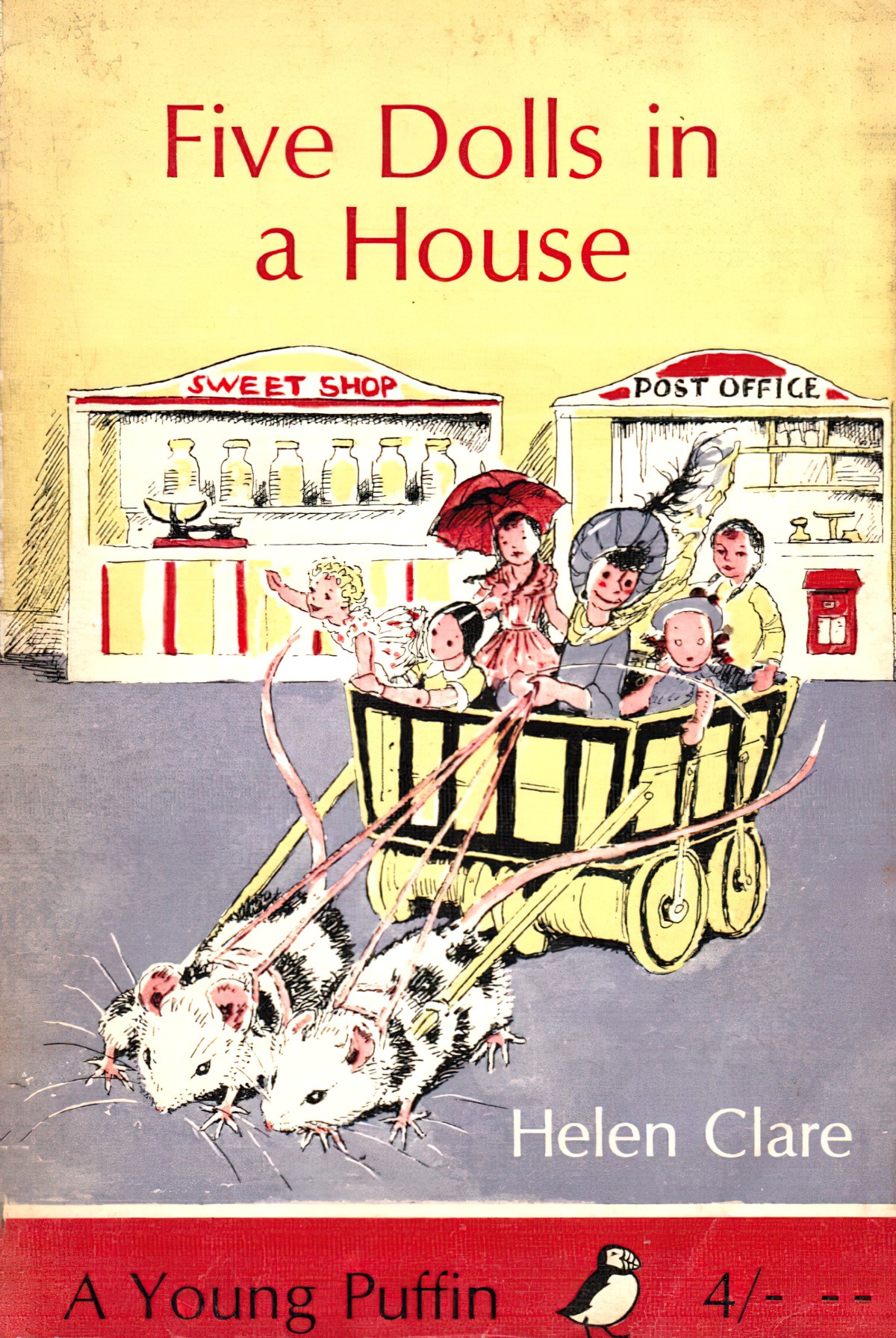
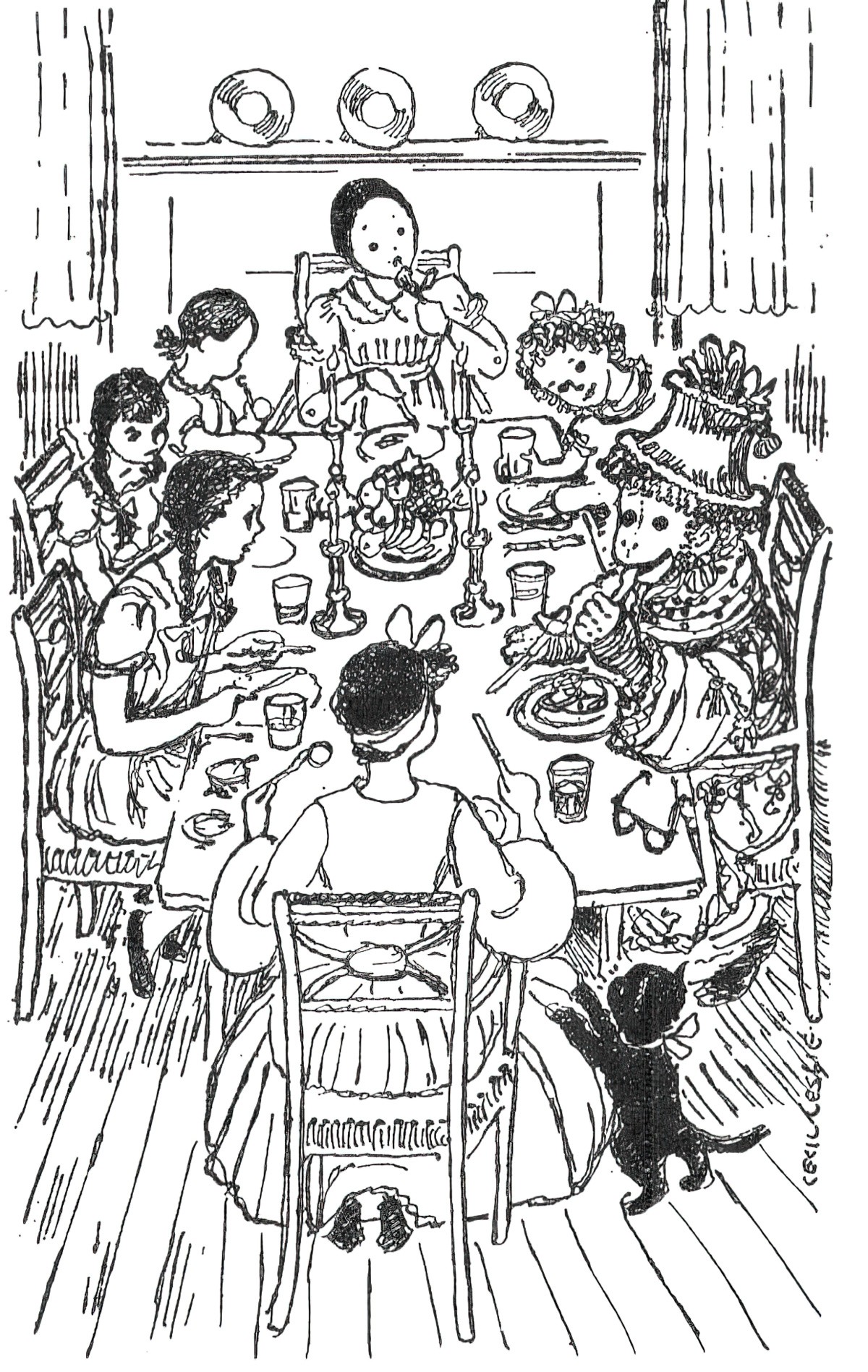
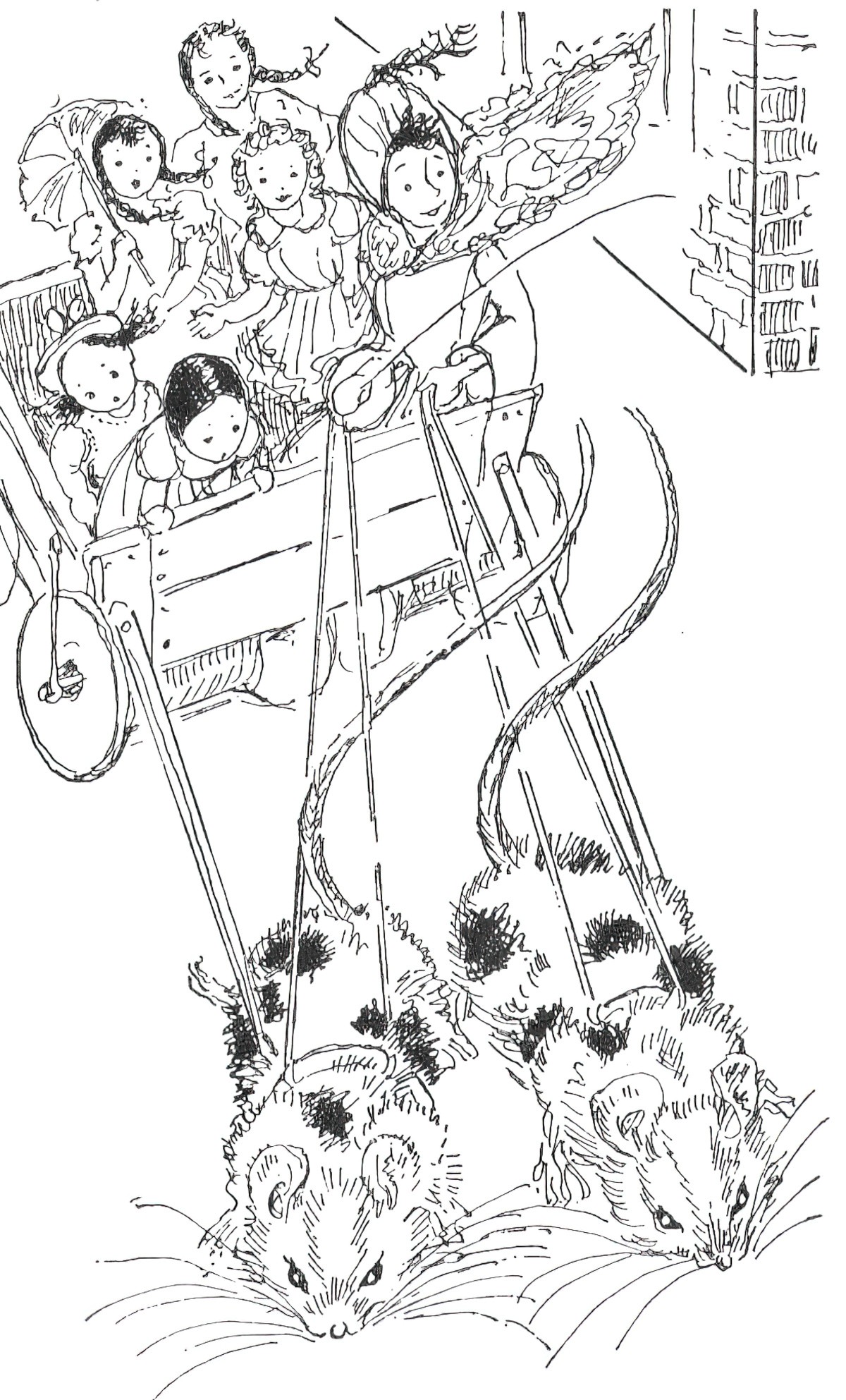
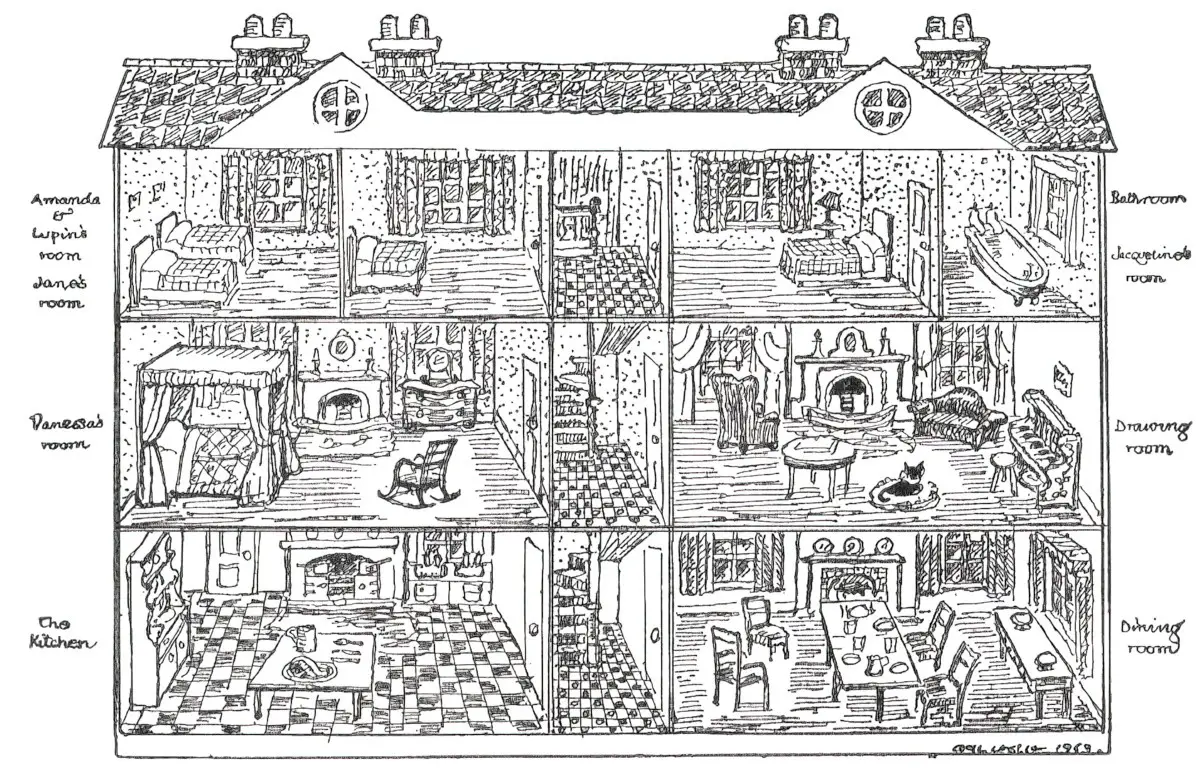
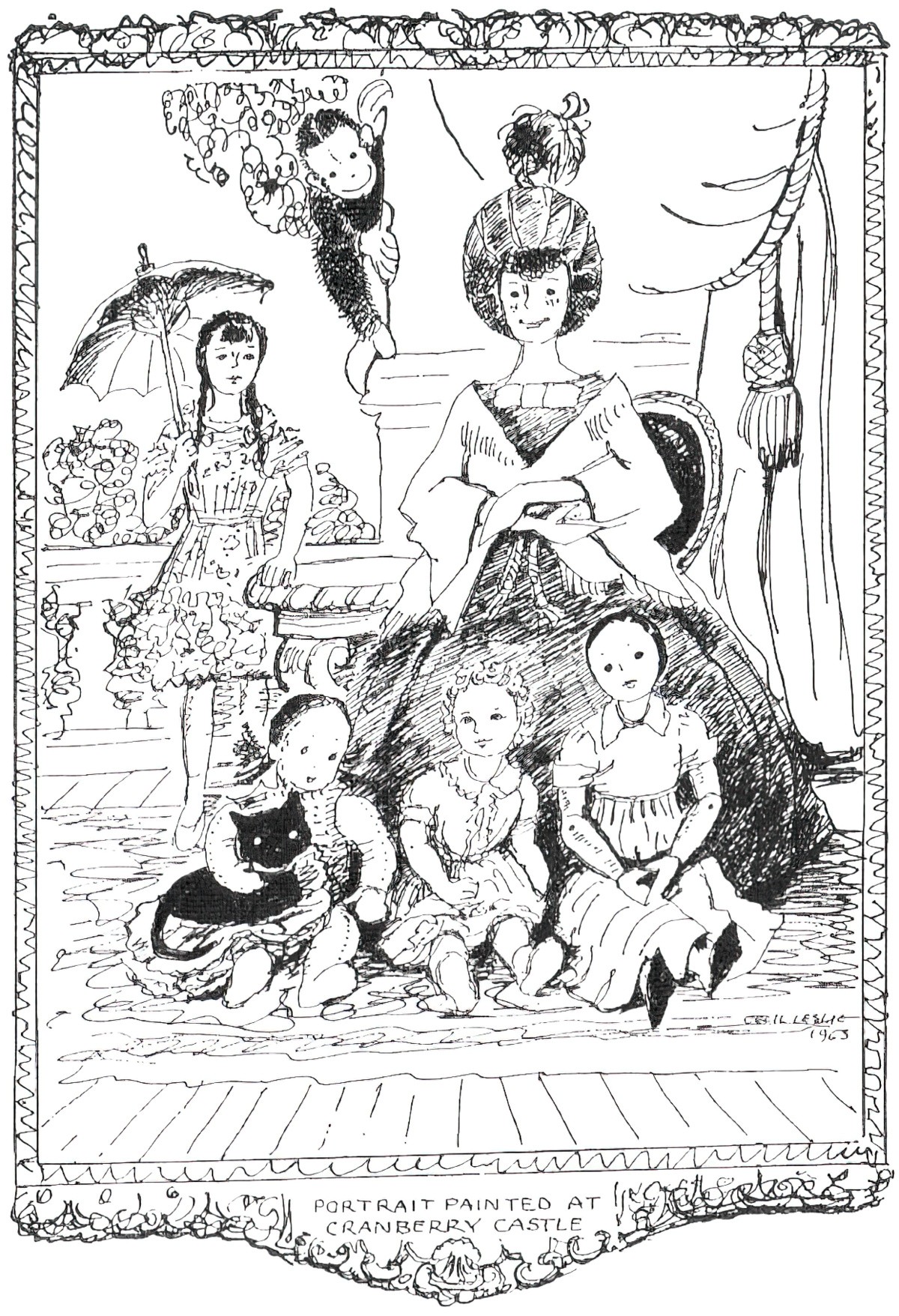
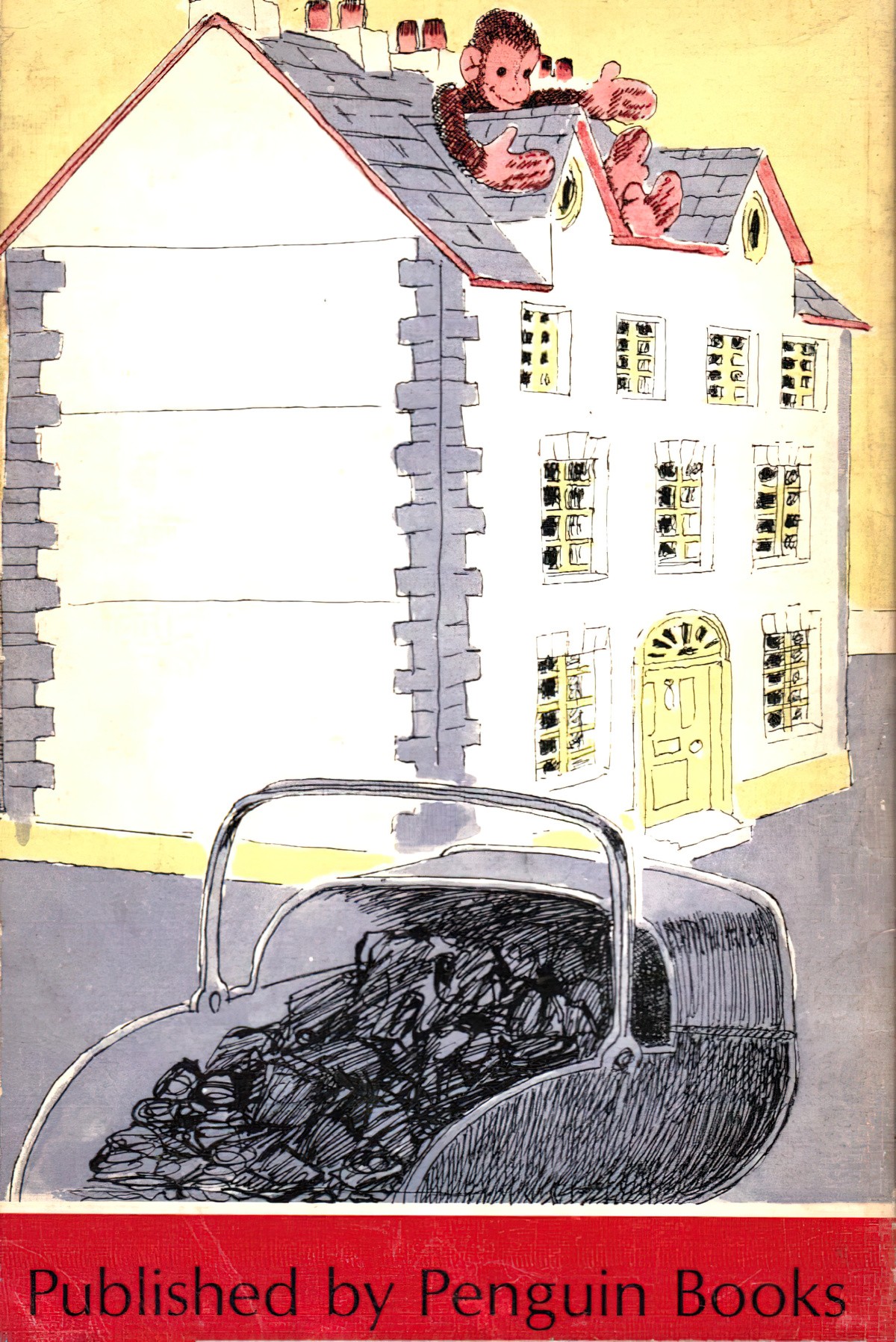
See also: Tom Thumb, Thumbelina and Other Miniature Tales
The immortal line about the lobsters, the ham, the fish, the pudding and the fruit, ‘They would not come off the plates but they were extremely beautiful’, is a definitive summary of what all doll’s houses are like — appealing to the eye but firmly defeating all four of the other senses, as the two bad mice discover.
Margaret Blount, Animal Land
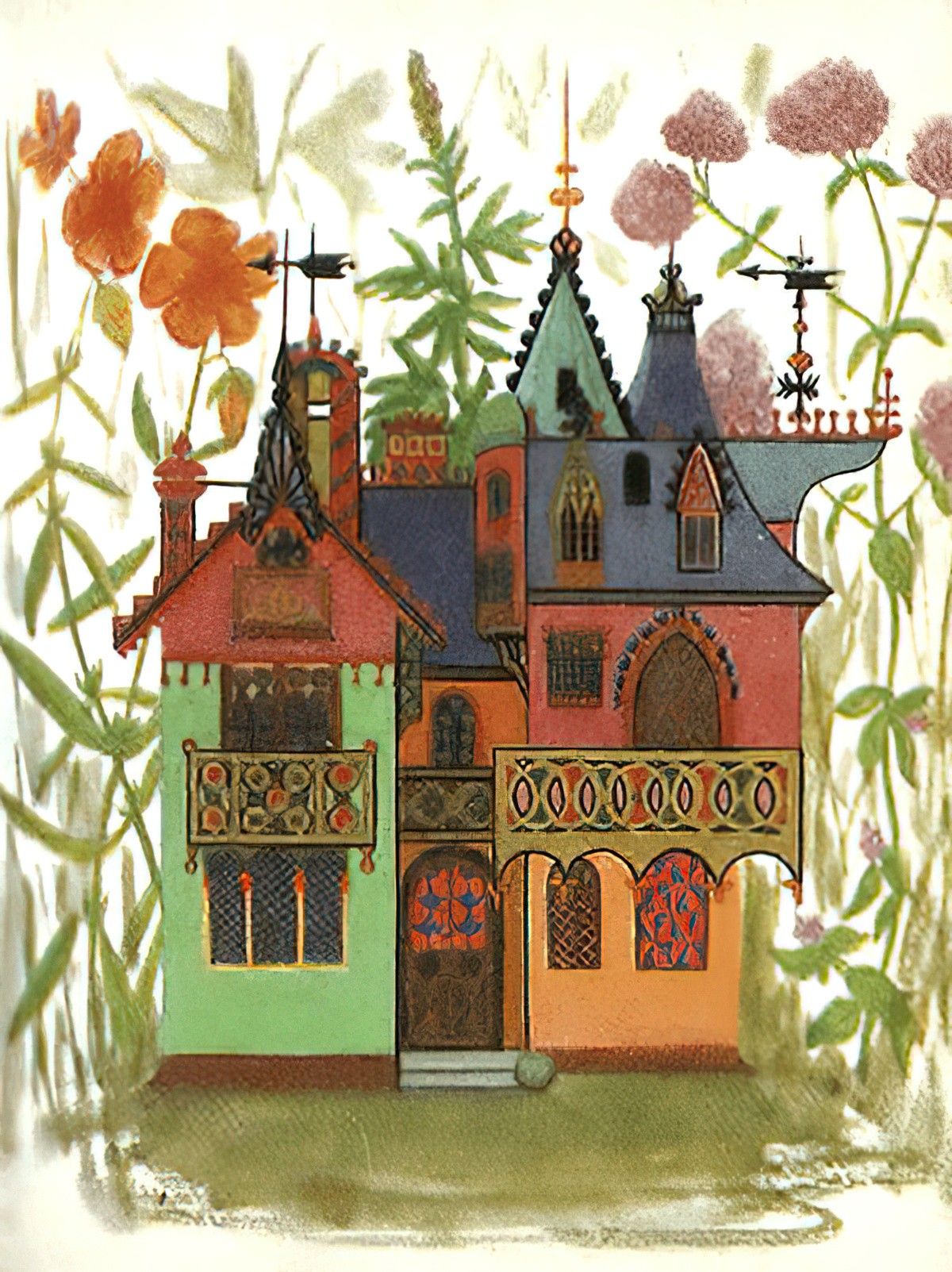
The Dollhouse In Gilmore girls
Emily and Richard’s house is large but it is stifling. Presided over by a matriarch who can’t be civil to any of the maids, dinner must arrive on-time, everything has a place and it is even an historic home, opened to visitors at a certain time of the year. Lorelei’s childhood room has a creepy dollhouse and is full of frou-frou. This house stands in stark opposition to the house Lorelei has made for herself, with its mismatching lamps and her refusal to stock anything in the kitchen. The dollhouse in Lorelei’s childhood room is empty and unplayed with just as the bedroom itself and the large house is mostly empty due to the only Gilmore daughter refusing, for years, to bring the grand-daughter to the house.
Lorelai had a dollhouse while growing up in the Gilmore Mansion, which is kept in her old bedroom. It is one of the few things that she actually likes from her childhood. Emily later threatens to give it away to charity if Lorelai doesn’t take it from her immediately, but Richard delivers it to her house so he can talk to her about Rory. While Jackson is staying at her house to avoid catching the chicken pox, he accidentally breaks it.
Gilmore girls wiki
Jackson’s buffoonery is ironically, darkly funny because the dollhouse is so precious, and the only item that connects Lorelai to her parents’ house. But Jackson probably did her a favour. Over the course of 7 seasons, Lorelai does learn (mostly) to untangle herself emotionally from her parents, and the American Revolution Aristocracy that her parents — and the big fancy dollhouse — represent.
Monica’s Dollhouse In Friends
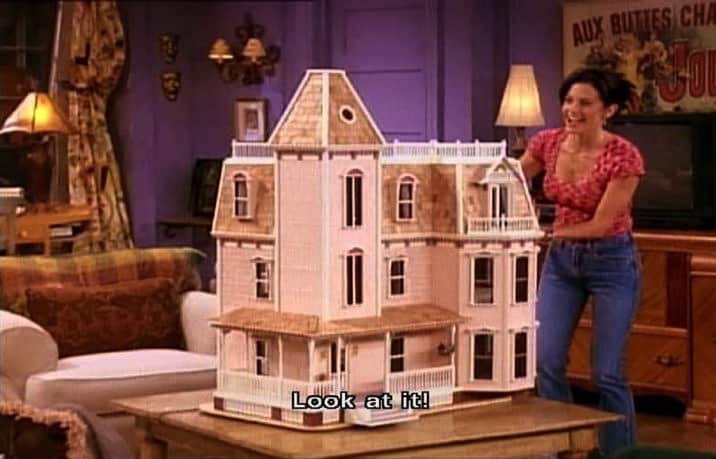
The character of Monica Geller has quite a bit in common with Lorelai Gilmore, save their separate fates at the end of the series.
Monica marries Chandler Bing, of course and, unable to conceive, the couple eventually adopts twins and moves out of their apartment into a larger house in the suburbs to raise their growing family. The dollhouse (inadvertently?) foreshadows all that is to come for Monica. This is what she was brought up to do: to build a family in a standalone house. Monica comes from an upper-class American family and the ownership of a gigantic dollhouse is a symbol of that.
Pam’s Dollhouse In Big Love, HBO TV Series
Remember Pam, the nosy neighbour from across the street? Pam is naive enough to believe Margine’s story at first, that her husband died in the Iraq War (which makes her a good fit as a friend for Marge, who is obviously equally naive). Pam can’t have children, but her interest in building a family — a typically Mormon aspiration — is symbolised by her hobby, which is working on a beautiful and elaborate doll’s house. She’s spending hours and hours on this to fill the void of having no family to tend to.
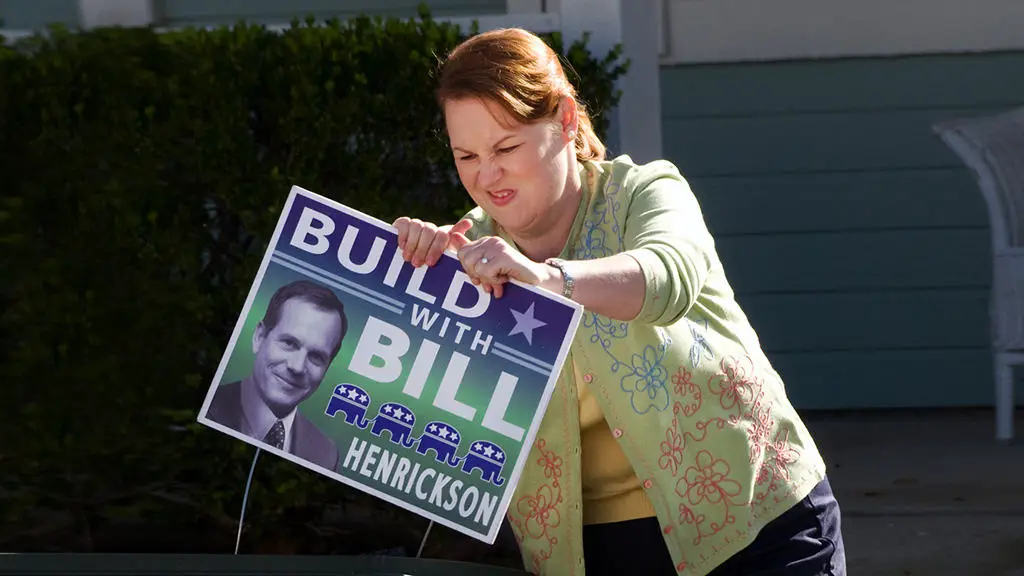
But Pam’s dollhouse does more than simply depict the childlike nature of Pam, and the void in her life. The episodes of Big Love open with a high-angle establishing shot of the street, in a new development somewhere in Sandy, Utah. This makes the houses themselves look like doll’s houses. These adult humans are ‘playing’ happy families, when behind closed doors they are anything but. The doll’s house is therefore a symbol of ‘play’, contrasting with ‘harsh reality’. The setting of Big Love is an excellent example of an snail under the leaf setting.
A dollhouse is meant to be looked at — at least, the kind of doll’s house Pam makes are decorative — and they are storybook in their nature; as in a stage set, staircases don’t need to go anywhere; furniture is arranged to be accessed from only one side.
Doll’s houses are therefore like a stage.
The furniture you find in doll’s houses is from another era. You don’t find computers, phone chargers and flat-screen TVs inside doll’s houses.
Doll’s houses are therefore symbols of a former time.
All of these aspects of the doll’s house make it an excellent symbolic object for use in Big Love, where image does not match reality, where the family lives in modern society with anachronistic values and where the ‘staircase’ (to Heaven) probably doesn’t lead where Bill Henrickson thinks it will.
My Summer Of Love, 2004 Film
My Summer Of Love is about a 15-year-old girl who falls into infatuation with a rich girl home for the summer. They sort of fall in love, though it turns out the rich girl has been immersed in an elaborate fantasy life. There is a dollhouse in the older sister’s room. The girls play around with it, not as children, but to find a packet of magic mushrooms. This is where adult decisions rub up against childhood fantasies.
Only when we look back on this scene do we realise that the dollhouse is also highly symbolic of fakery. Even the name of Tamsin Fakenham is symbolic.
“The Doll’s House”, Short Story by Katherine Mansfield
This story appeared in Mansfield’s collection The Dove’s Nest and is considered one of her more important works.
“The Doll’s House” is concerned with the difficulties of the child in coming to terms with the brutal realities of class consciousness and social ostracism.
The social attitudes of the parents are an important feature of the story. e.g. Emmie Cole “nodded to Isabel as she’d seen her mother do on those occasions”. Lil, when ordered away by Aunt Beryl is seen “huddling along like her mother.”
“Your ma told our ma you wasn’t to speak to us” says Lil. The Kelvey children accept the social division as much as the other children do.
Note the significance of the lamp – this is symbol of light, of awakening.
“The father and mother dolls, who sprawled very stiff as though they had fainted in the drawing room, and their two little children asleep upstairs were really too big for the doll’s house. They didn’t look as though they belonged. But the lamp was perfect. It seemed to smile at Kezia, to say “I live here”. The lamp was real.
The lamp symbolizes light – truth. It is a contrast to the material splendours of the doll’s house, and to the materialistic values of the stiffly sprawling parents. It is significant that it is Kezia’s favourite as she is the only one in the story who has the courage and kindness to reach out across social barriers. Note that Else’s words at the end of the story suggest that she and Kezia share the same values.
“Something Childish But Very Natural”, Short Story by Katherine Mansfield
There’s no actual doll house in “Something Childish But Very Natural“. But after Edna tells Henry that she’d like to remain in childhood for a good while longer, rejecting his advances, the young lovers turn London into their personal playground. They both seem to come from upper middle-class families, which partly explains why they see other people’s houses as ‘small’ but I think there’s more to it than that. To them, these houses are doll houses — designed for play — and Mansfield is also playing with scale.
The houses were small and covered with creepers and ivy. Some of them had worn wooden steps leading up to the doors. You had to go down a little flight of steps to enter some of the others; and just across the road—to be seen from every window—was the river, with a walk beside it and some high poplar trees.
“This is the place for us to live in,” said Henry. “There’s a house to let, too. I wonder if it would wait if we asked it. I’m sure it would.”
“Yes, I would like to live there,” said Edna.
The setting seems to have shrunk a little in relation to our two lovers. This reflects their emotional state. Nothing seems scary to them. They feel that together they can conquer the world. This perfectly describes the feeling of intense new love.
Beatrix Potter uses a very similar trick in “The Tale of Mrs Tiggy-Winkle“. It appears Lucie can drop a pebble down a chimney, even from the top of a hill. This is describing how Little-town looks tiny from the elevated vantage point, like a dollhouse. She is about to enter a world of play.
Tom’s Midnight Garden by Phillipa Pearce
Tom’s Midnight Garden is not about a dollhouse but I am reminded of the experience of playing with a dollhouse as Tom explores the magical realm:
[T}his was a great disappointment to him—he found that he could not, by the ordinary grasping and pushing of his hand, open any of the doors in the garden, to go through them. He could not push open the door of the greenhouse or of the little heating-house behind it, or the door in the south wall by the sundial.
Kings of Summer
Kings of Summer is an indie coming-of-age film and again features no actual doll house. Instead, a group of high school aged boys get sick of society and decide to retreat to the wild. In the nearby woods, they renovate and decorate a life-sized version of a doll house. These boys might as well be playing. That’s how much hope they have of really escaping society without suffering the fate of Chris McCandless.
Kings of Summer is what ‘a dollhouse story’ can look like when it’s a story about boys and masculinity.
The Doll House from The Mouse and His Child
There is a utopian, safe doll’s house in the toy shop which opens the mid twentieth century children’s novel by Russell Hoban. This is the illustration:
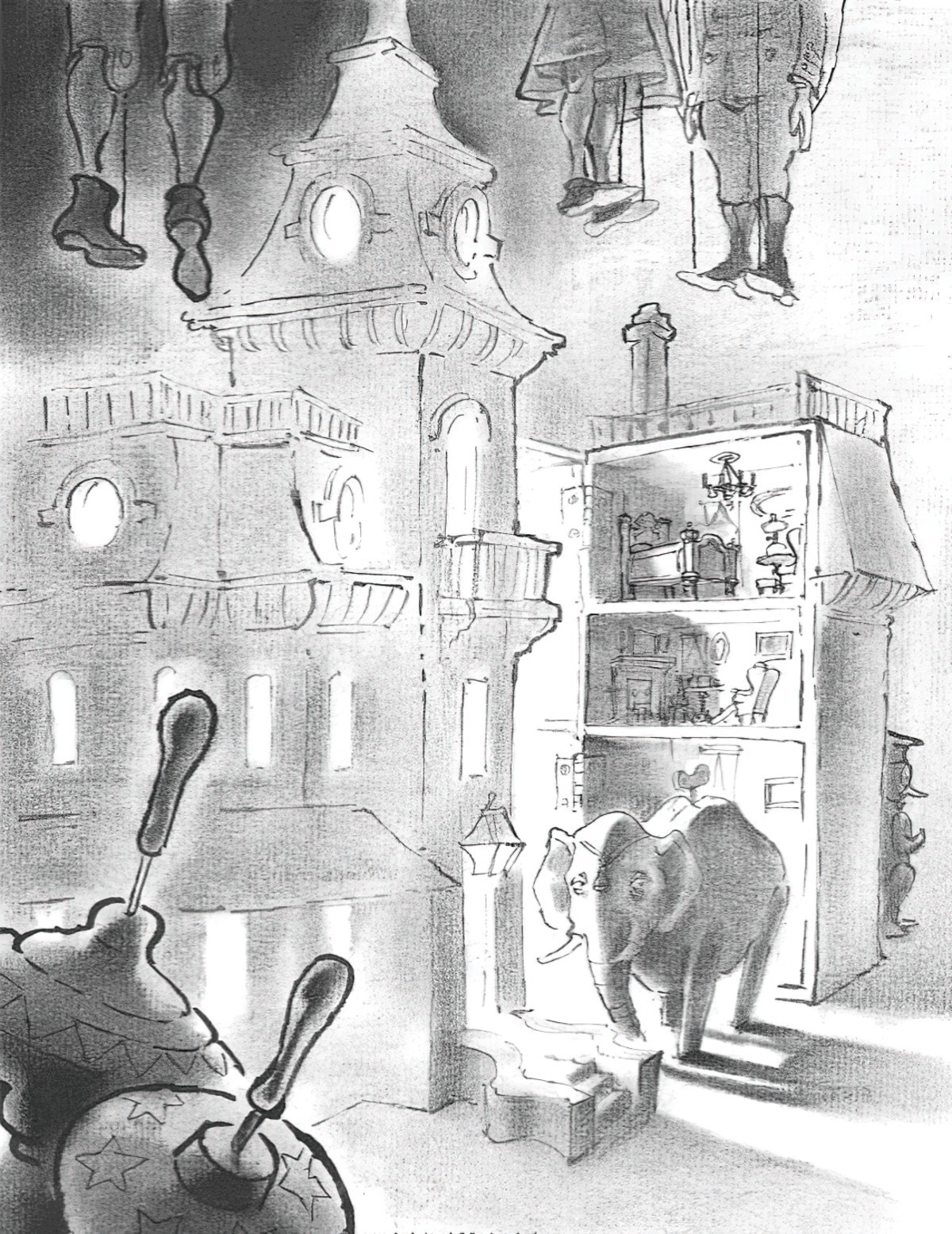
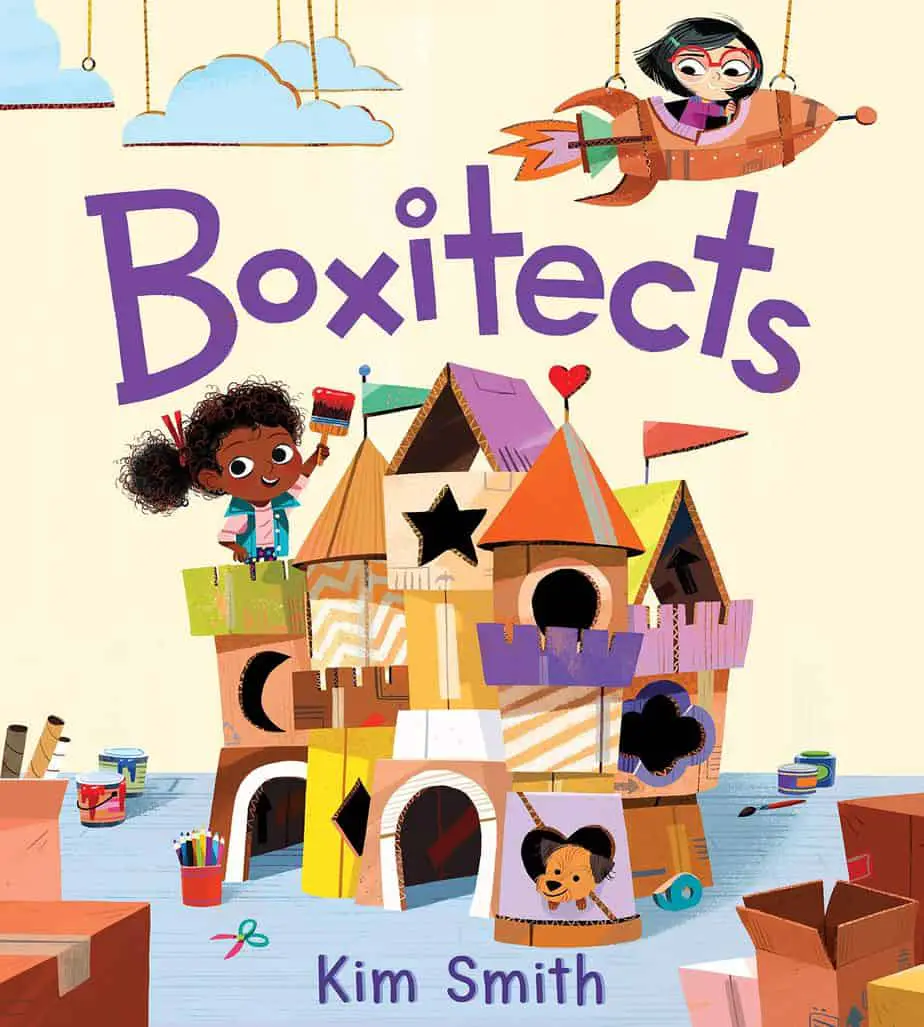
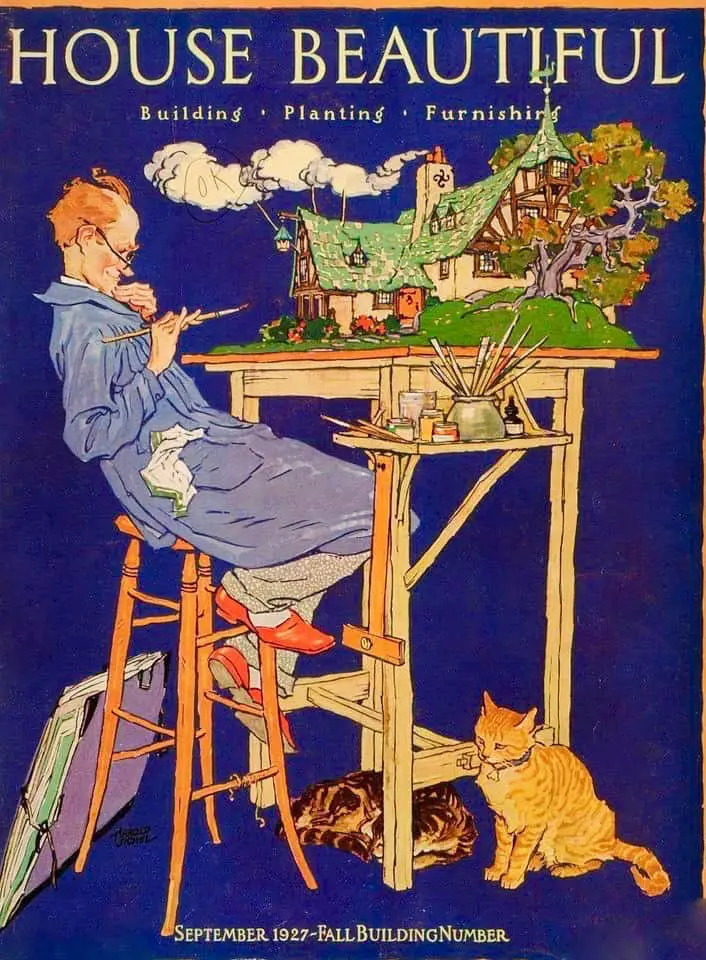
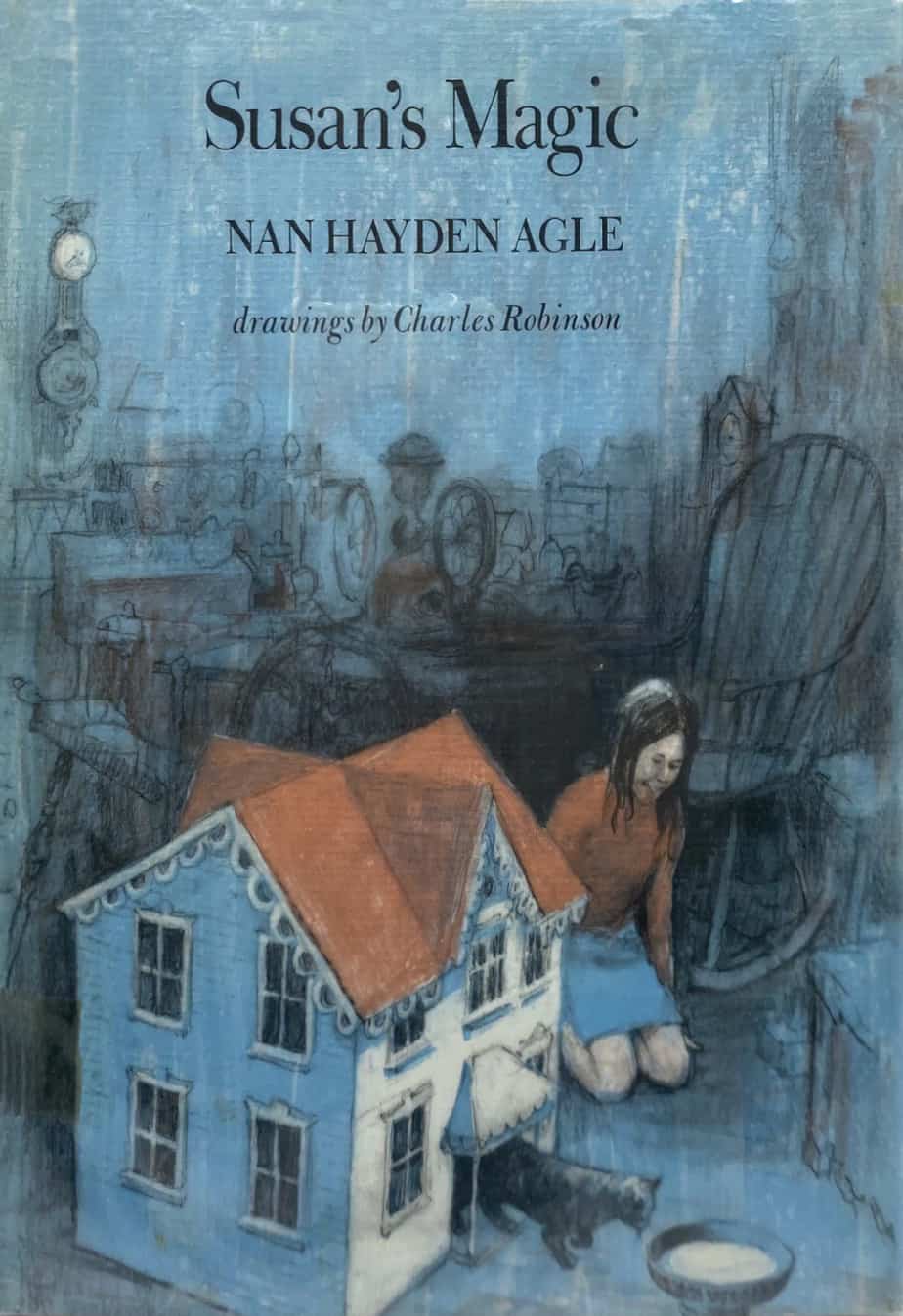
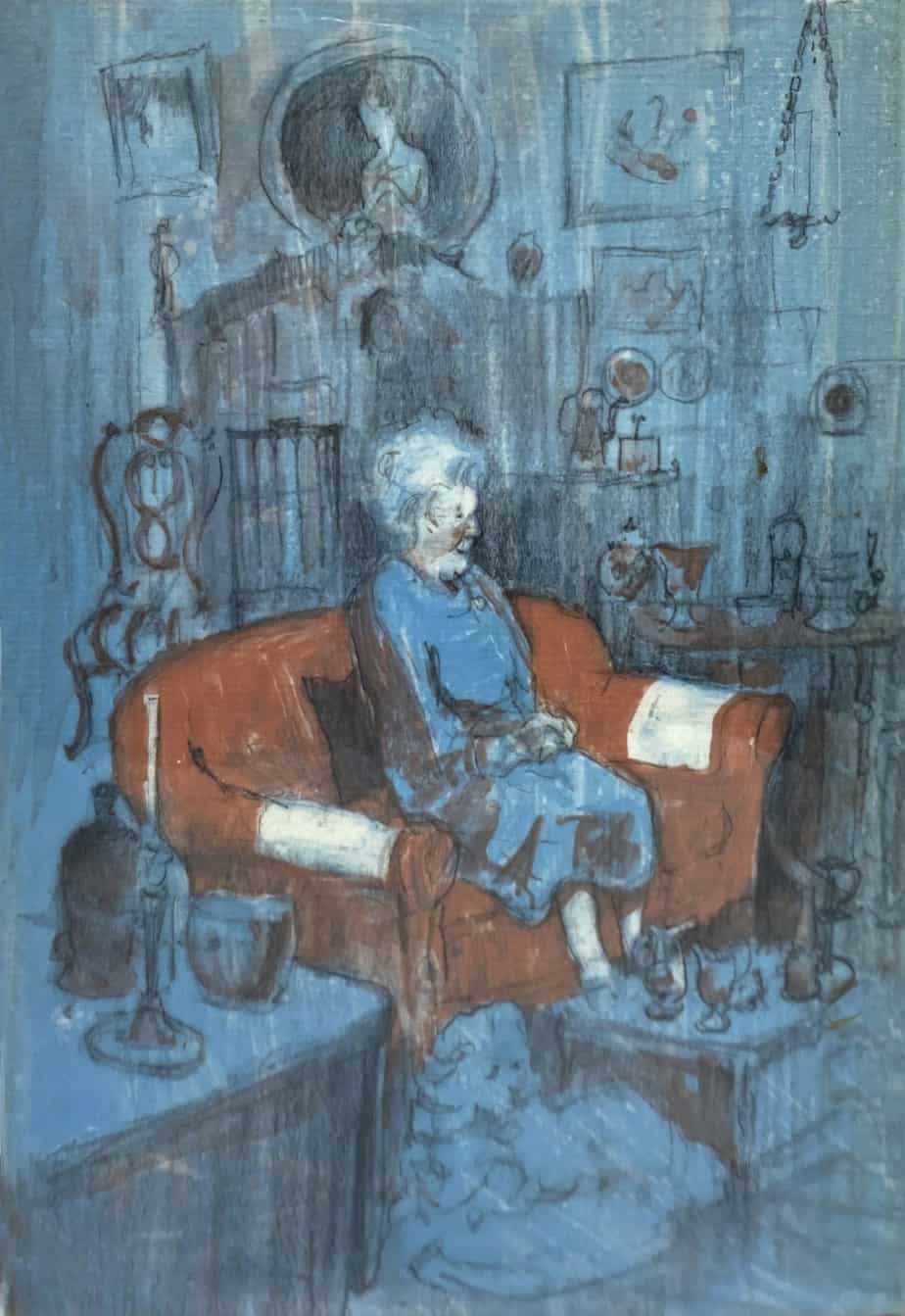
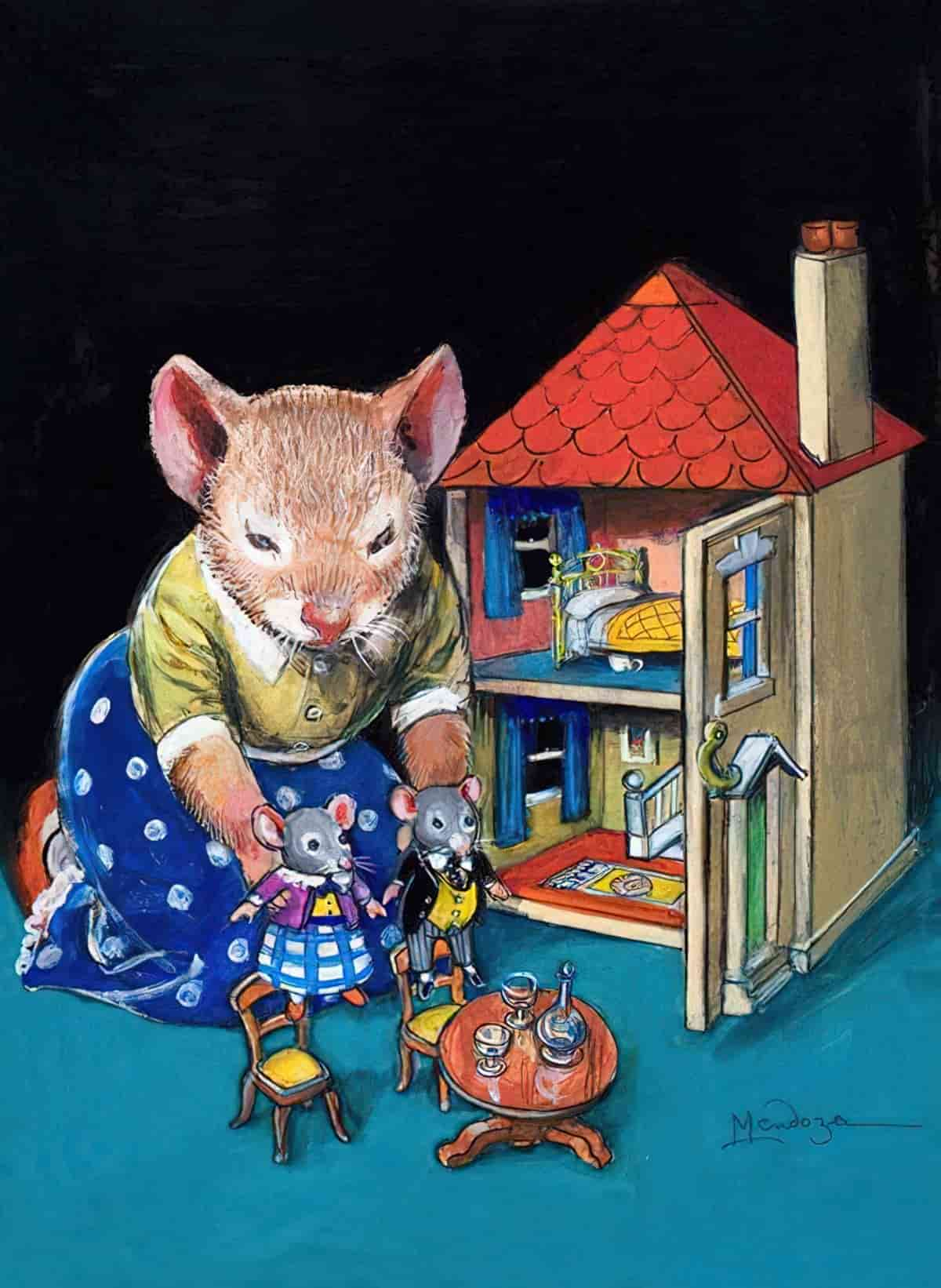
[D]riving around The Ville today, where Moore has lived for almost his entire life, the neighborhood looks very different. Some buildings are simply rundown or abandoned, but others are missing large chunks entirely. Walls have disappeared. The bricks are gone. “We call them dollhouses,” says Moore, “because you can look inside of them.”
Dollhouses of St Louis, 99% Invisible podcast
FOR FURTHER INVESTIGATION
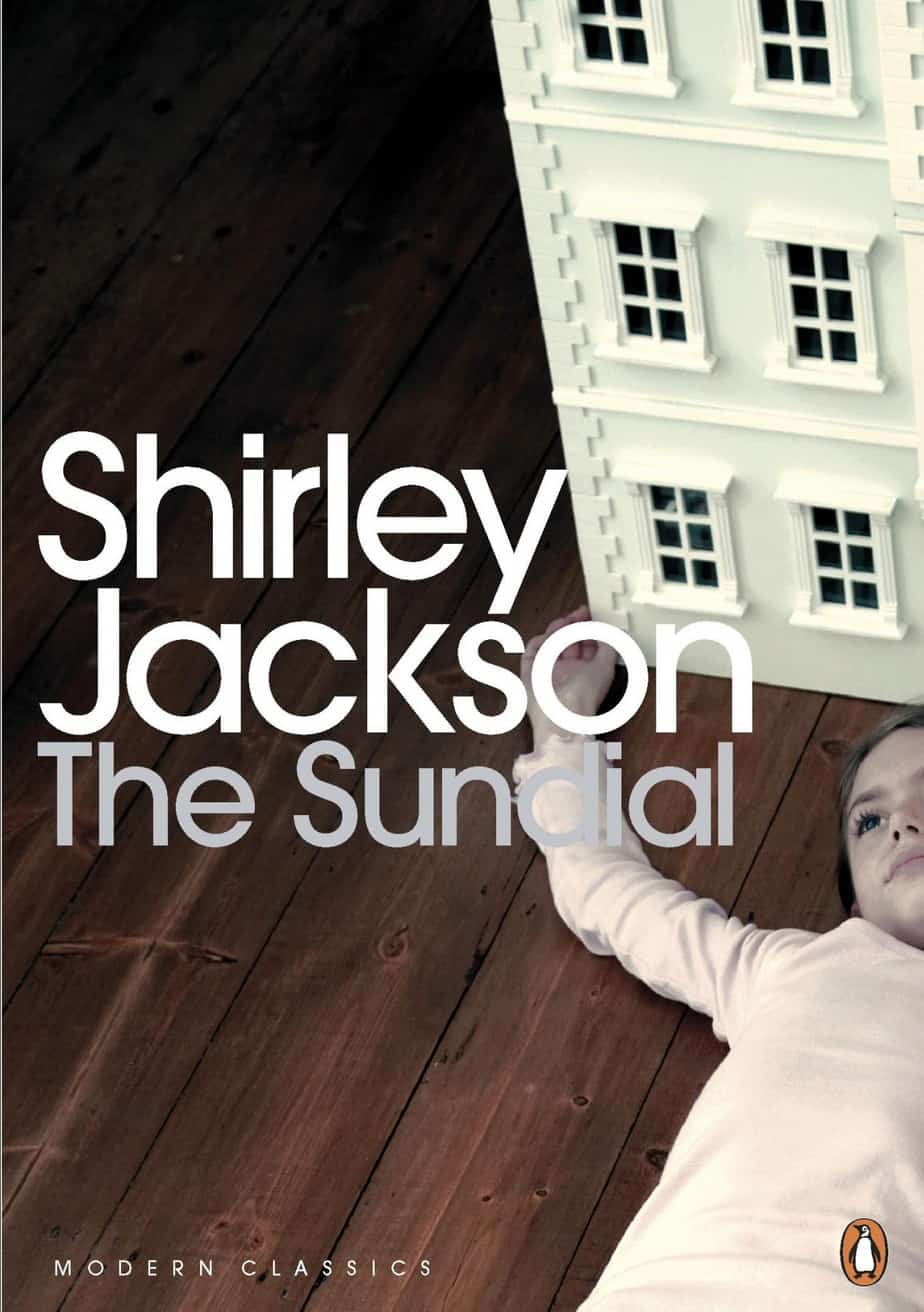
Aunt Fanny knows when the world will end….
Aunt Fanny has always been somewhat peculiar. No one is surprised that while the Halloran clan gathers at the crumbling old mansion for a funeral she wanders off to the secret garden. But when she reports the vision she had there, the family is engulfed in fear, violence, and madness. For Aunt Fanny’s long-dead father has given her the precise date of the final cataclysm!
